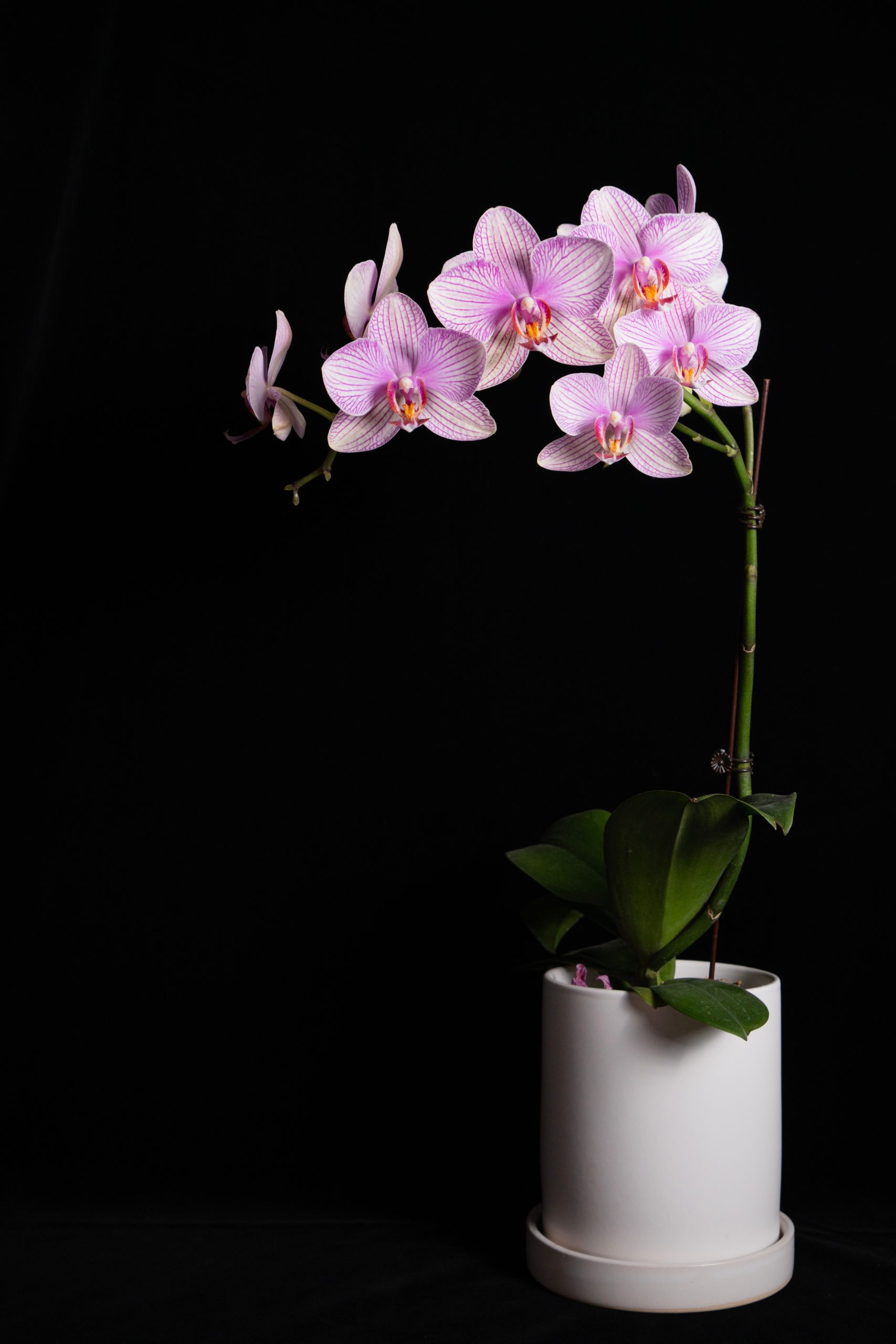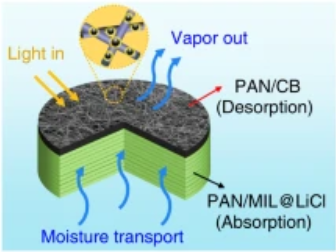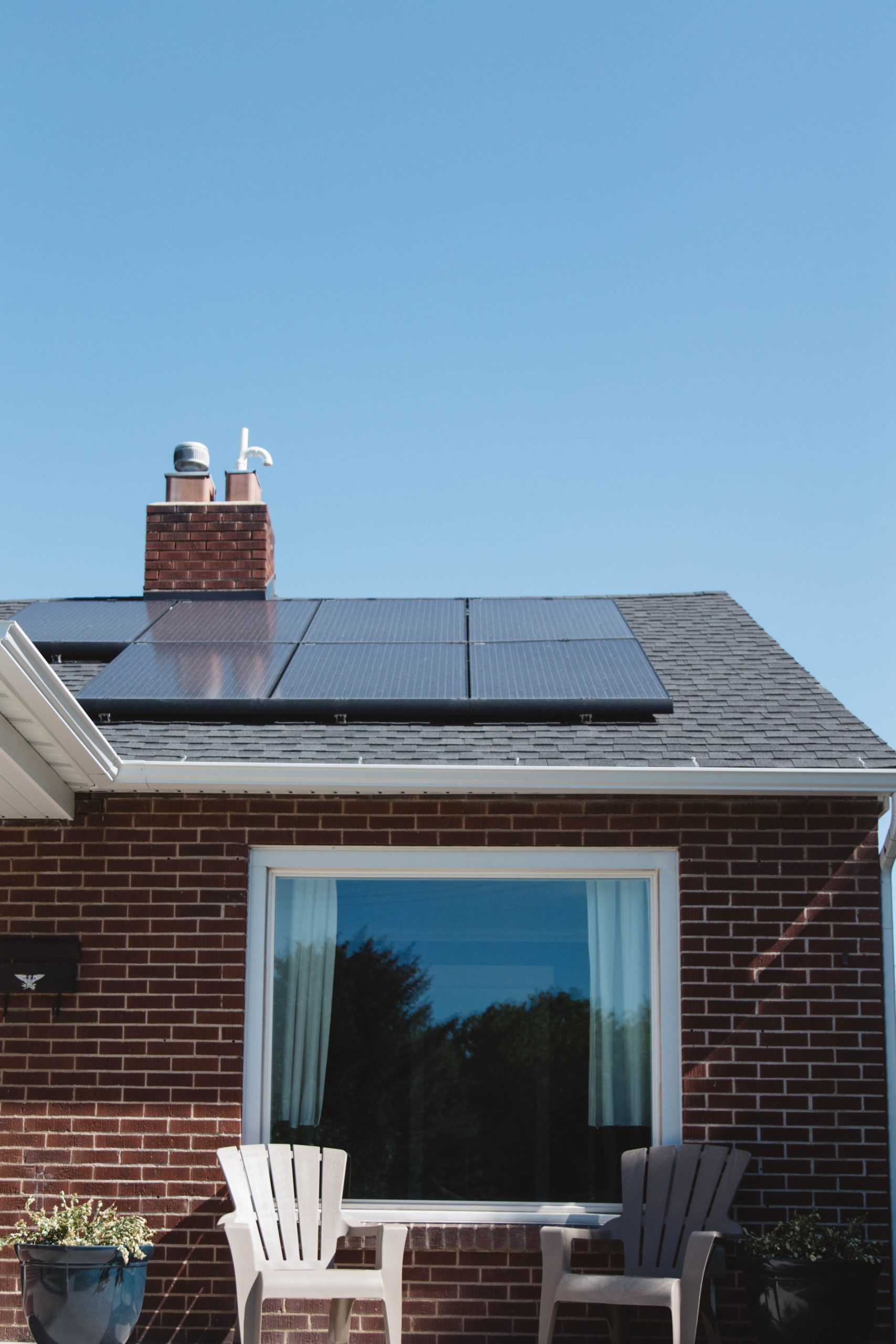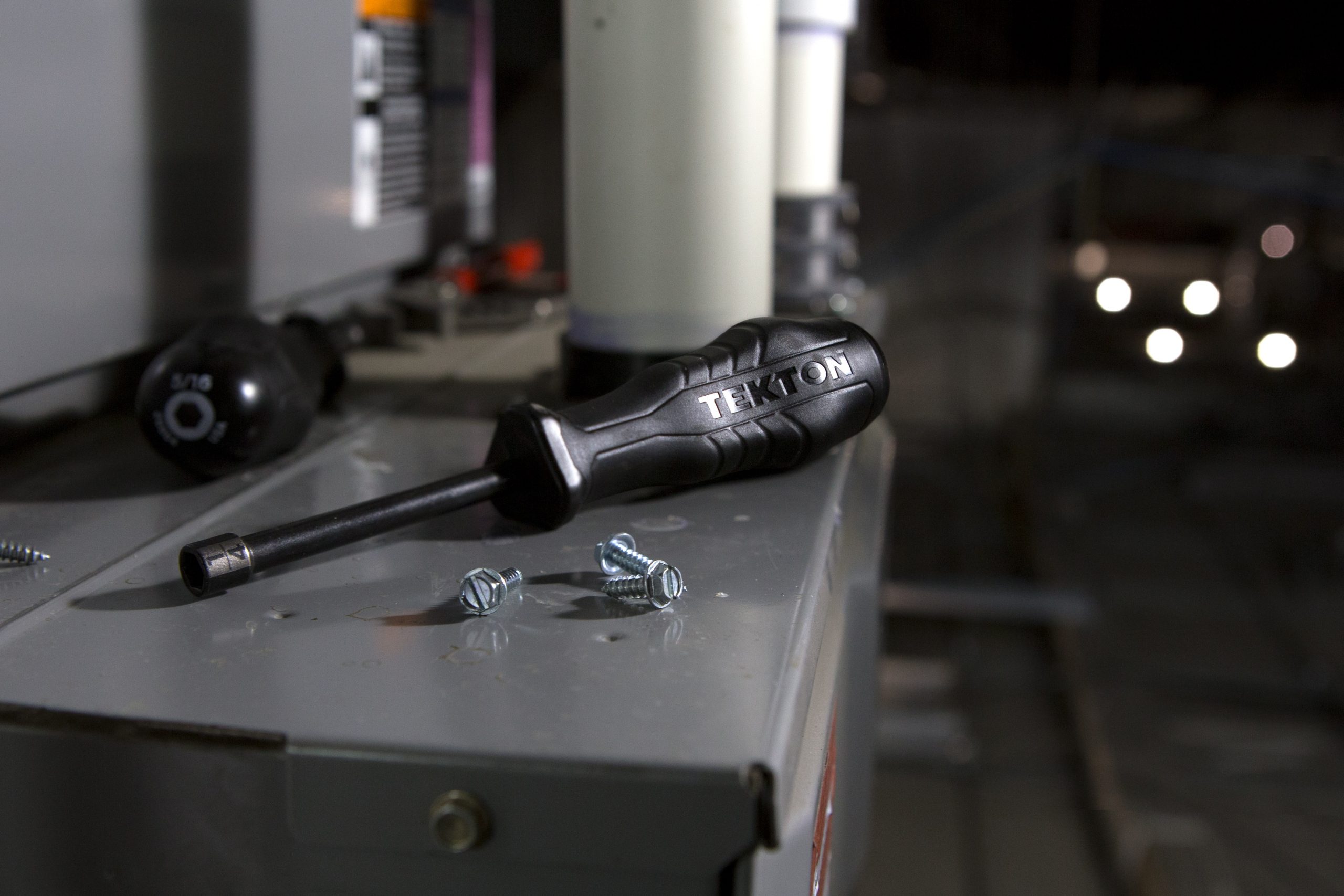Our clients know that here at HypoAir, we’re all about managing humidity for a healthier home. If your house is above 60% humidity, you can start to have mold problems (the higher the humidity, the more quickly mold can grow). We’ve written on dehumidifiers of all sizes for any room in your home, but none of them tops what this invention does. It’s a passive dehumidifier that “sucks” the moisture out of air and evaporates it outside with help from the sun, even when the outside humidity was higher than inside!
Some of the best inventions have been developed by observing nature, called biomimicry. In this case, researchers observed how trees “transpire” moisture, which includes lifting water from the roots to the leaves, where it evaporates through the pores, or stomata, of the leaves. Thus, there are two parts of the tree that function in transpiration: the trunk of the tree contains xylem, which are very small capillaries or “straws”, and the pores in the leaves. The sun’s energy starts the evaporation process and actually creates a negative pressure in the xylem, essentially sucking water up from the ground to the leaves. (How do large trees, such as redwoods, get water from their roots to the leaves?)
Researchers searched for similar behavior when they developed materials to mimic this water movement. Two different materials were needed: one to absorb the water from the air (super-hygroscopic) and one to readily enable it to evaporate using the sun’s heat. Metal-organic frameworks (MOFs) have been the subject of enormous research in the last decade. They are like activated charcoal on steroids; because of their structured pores, internal surface area is huge. When comparing the surface area per unit weight, the activated carbons are 400–2000 m2/g, zeolites up to 1500 m2/g, and MOFs are in the 1500–7000 m2/g range. MOFs are the porous materials with the highest surface area, with an ultra-high porosity of up to 90% of free volume. (MOFs vs. other porous materials for carbon capture) On top of this, MOFs can be custom-built to “adsorb” many different gasses or liquids, such as water, VOCs, metals, etc. Thus, it made sense to make a very thirsty (hygroscopic) MOF to suck up water vapor, also known as a desiccant. The researchers decided to try impregnating Lithium Chloride (LiCl, a salt) into an MOF. MOFs are typically granular, like sand, but the researchers wanted this component to be self-supporting, so they decided to nanospin the MOFs into a nanofibrous membrane (NFM) using polyacrylonitrile (PAN), a synthetic polymer resin. The NFM would also enable the component to have a fast moisture absorption–desorption rate. Thus, the “straw” component of the dehumidifier is abbreviated (PAN/MIL@LiCl) NFM, with MIL describing the “multilayer”.
Passing the water vapor through to the outside of the space, the other component had to allow heat from the sun to evaporate this water, creating the “wicking” action. This is the photothermal component. Carbon black is a fine black powder produced by partial burning and pyrolysis of oil residues or natural gas at high temperatures. (Carbon Black 101) The black color works well to absorb solar heat, and adding it to a PAN NFM (PAN/CB) allows for great surface area, and thus evaporation rates. The two layers put together are abbreviated PAN/MIL@LiCl-PAN/CB or for short, PML-PC NFM.
How did this layered dehumidifier configuration work out? Impressively! Being semi-flexible, it could be laid flat as a dehumidifier “panel” in a roof, or deformed to allow for water harvesting from the air (see diagram below). The scaled-down model of a house was constructed with dimensions of 40 cm × 50 cm × 40 cm, and a window with an area of 6 cm × 6 cm was designed for bilayer membrane installation. When light from the solar simulator illuminated the surface of the bilayer PML-PC NFM, the moisture in the indoor air was pumped by bilayer PML-PC NFM and simultaneously transported outdoors in the form of water vapor. The moisture actively moved from a high-humidity to a medium-humidity environment and also from a high-humidity to an ultra-high humidity environment through bilayer PML-PC NFM under sunlight irradiation. This is a unique advantage in terms of the dehumidification ability of the novel NFM-based moisture pump compared with traditional desiccants. When the device was placed in an environment with an ambient humidity of 46%, the indoor RH was reduced from 70 to 48.9% within 2 h using bilayer PML-PC NFM. When the device was placed in an environment with an ambient humidity of 80%. The indoor RH in the house model steadily decreased from 70 to 58.3% within 2 h using bilayer PML-PC NFM. These are lower humidity ending points than that of the NFM without a photothermal layer. (Super hygroscopic nanofibrous membrane-based moisture pump for solar-driven indoor dehumidification)
Source: (Super hygroscopic nanofibrous membrane-based moisture pump for solar-driven indoor dehumidification
Now, what if night falls or clouds obscure the sun? Since the experiment used a solar simulator of 1 kw/M2, which is the maximum amount of sunlight that can be had at the equator on a cloudless day, that would be a pretty intense artificial light needed to keep dehumidifying through the night or clouds. For these reasons, this material would work best in an area with a high percentage of sunlight year-round, and lots of need for dehumidification (like the tropics). Is it affordable? Although the information in this paper is now 3 years old and other water-harvesting MOFs have been created, we don’t see any commercial applications yet, sadly. Making such a technology affordable will do a lot to improve air quality in homes where energy (and dehumidifiers) are relatively expensive, since it doesn’t require electricity to condense humidity or regenerate the desiccant. It could also allow many people to have access to clean drinking water by “pulling it out of thin air”. We think it’s just too cool of an idea to keep to ourselves!
As for “natural” dehumidifiers, there are many materials that are hygroscopic: rock salt, calcium chloride (DampRid), baking soda, even sugar and honey. The most efficient material we’ve seen is rock salt, most of all because it can be recycled: simply retain the liquid, let it evaporate in a pan outside in the sun, and break up the chunks to reuse it again (be sure to protect animals and children from drinking it by placing a screen over it!). The downside to a rock salt dehumidifier is that it will only draw humidity down to 75%, which is the humidity that causes the salt to dissolve. Also, using it in basements or porous/non-sealed areas is quite a lot of work for the results, as moisture is constantly being replenished from the ground through the concrete. Finally, if you don’t recycle it, the liquid is quite toxic to vegetation, animals and can damage some surfaces.
Some plants also act as natural dehumidifiers. Check out the videos of the desert plant T. aphylla, native to the Middle East, which moves salts from the local soil to its branches and uses them to harvest water from the air! The salt crystals on its branches change from a crystal structure during the day (low humidity) to drops of liquid at night, which it can absorb through its foliage. If you have a normal “green thumb”, check out this article for a list of indoor plants that dehumidify. Of course, we are all for natural, non-toxic and low-energy ways to improve the air in our homes!





